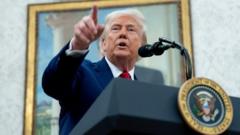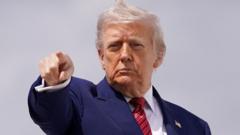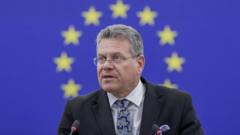With tariffs set to take effect soon, U.S. and E.U. officials are engaged in discussions to negotiate a trade deal that could alleviate tensions, though key differences remain unresolved.
U.S. and E.U. Trade Negotiations: Progress Amidst Challenges

U.S. and E.U. Trade Negotiations: Progress Amidst Challenges
Negotiations continue between the U.S. and E.U. as both sides seek to de-escalate trade tensions following recent statements from President Trump.
U.S. Commerce Secretary Howard Lutnick and E.U. Trade Commissioner Maros Sefcovic have initiated talks to address ongoing trade tensions following President Trump's announcement to postpone 50% tariffs on E.U. imports. This decision aims to facilitate dialogue between the two major economies while maintaining a clear timeline of July 9 for when levies might come into effect.
Sefcovic expressed optimism through social media, confirming the E.U.'s commitment to collaborative negotiations. Following a productive phone conversation between Trump and European Commission President Ursula von der Leyen, there appears to be renewed momentum toward reaching a trade agreement.
Despite these positive developments, significant hurdles persist. The E.U. proposes a mutual reduction of tariffs on industrial goods to zero, though they are simultaneously reviewing their list of retaliatory tariffs against U.S. products such as machinery and soybeans.
On the other hand, the U.S. administration seeks alterations in Europe’s consumption tax framework and digital regulations, a request that European officials remain resistant to entertain. As the deadline looms, both sides must navigate their contrasting priorities carefully to avoid a trade escalation that could impact global markets.





















